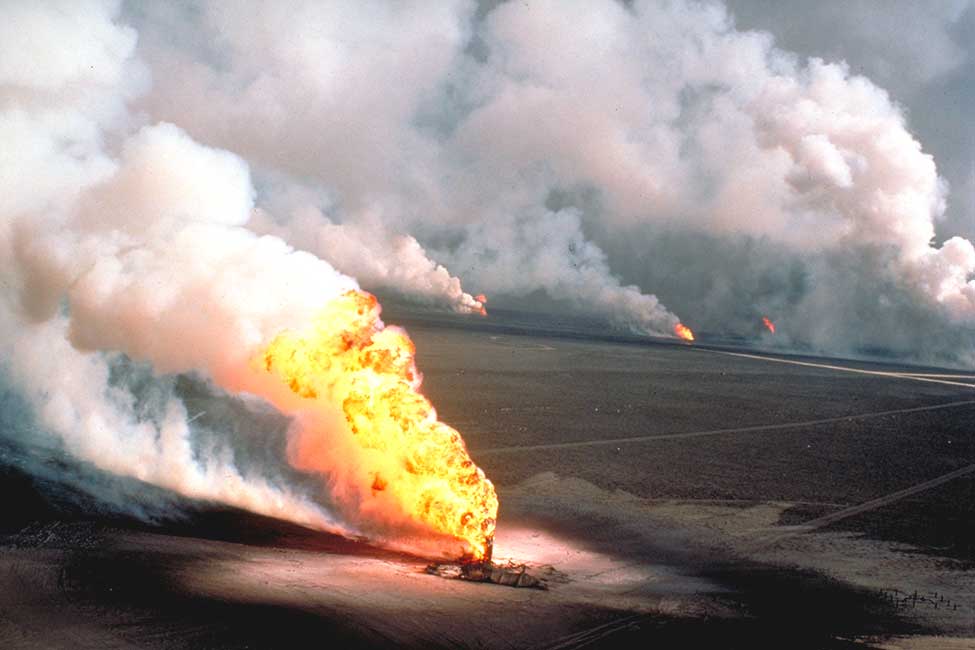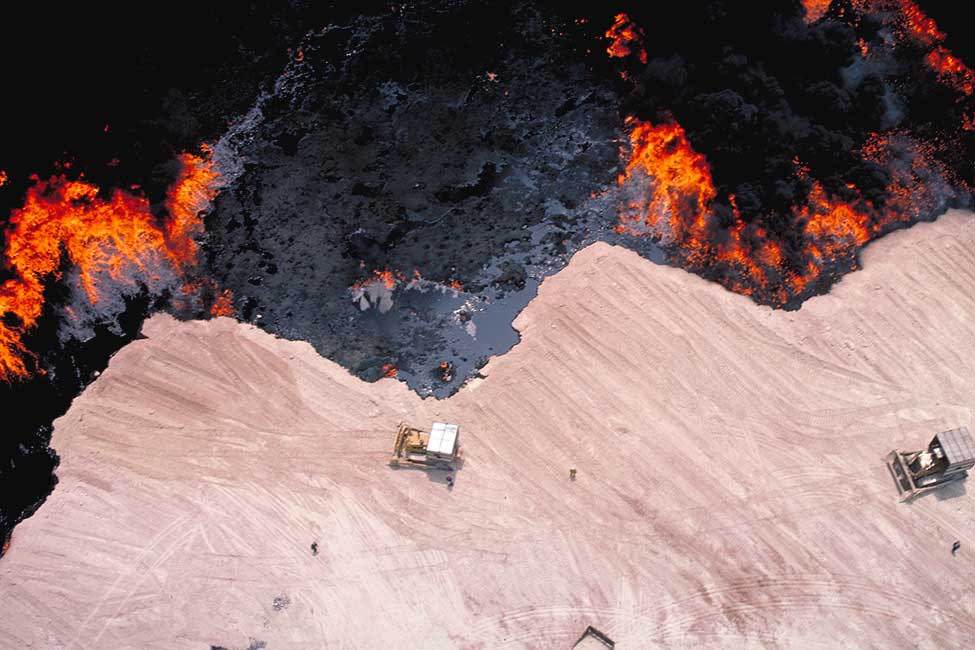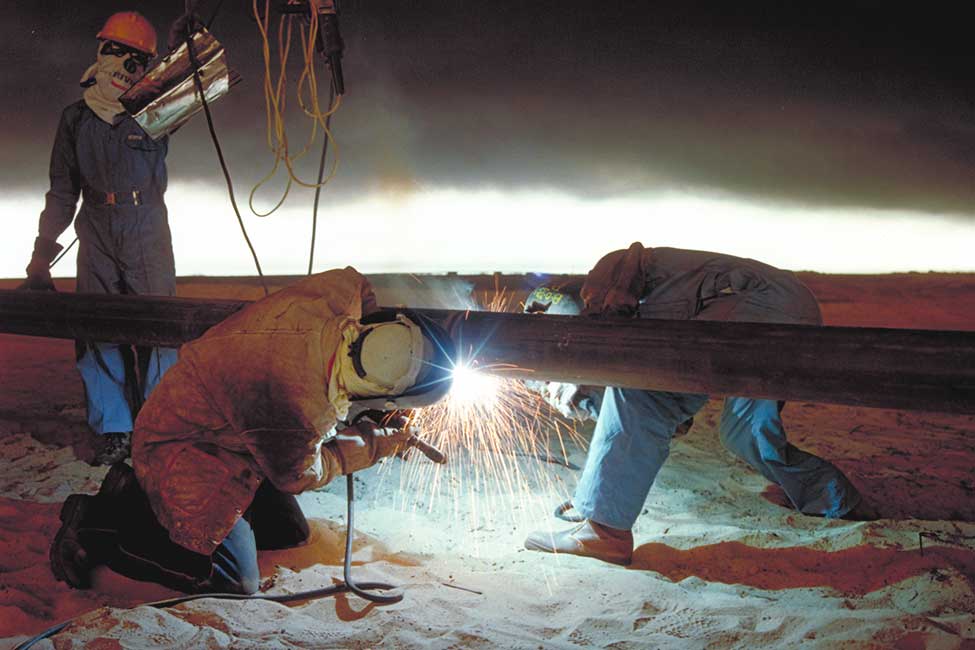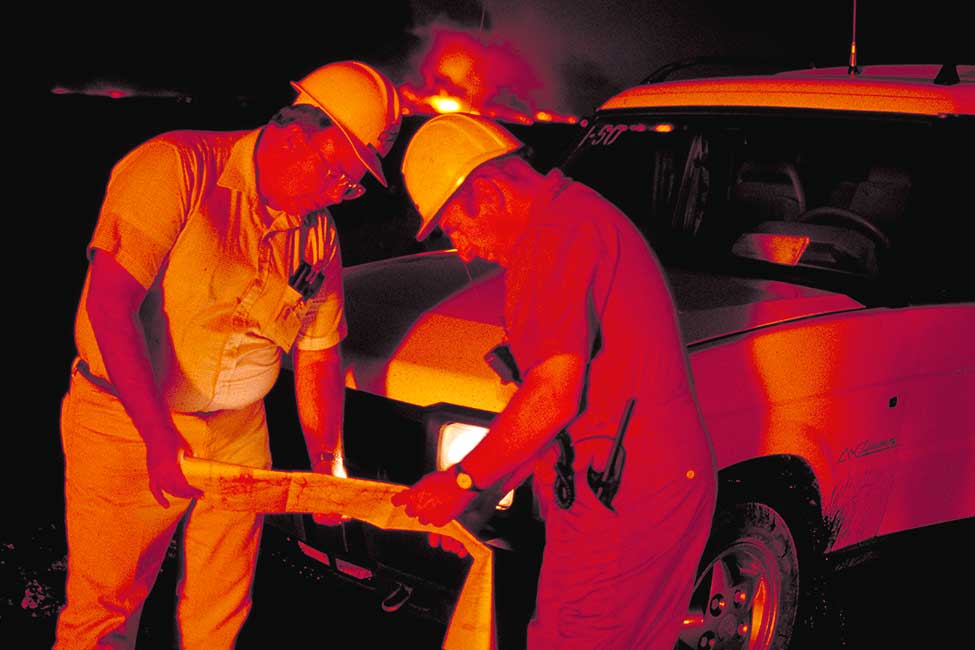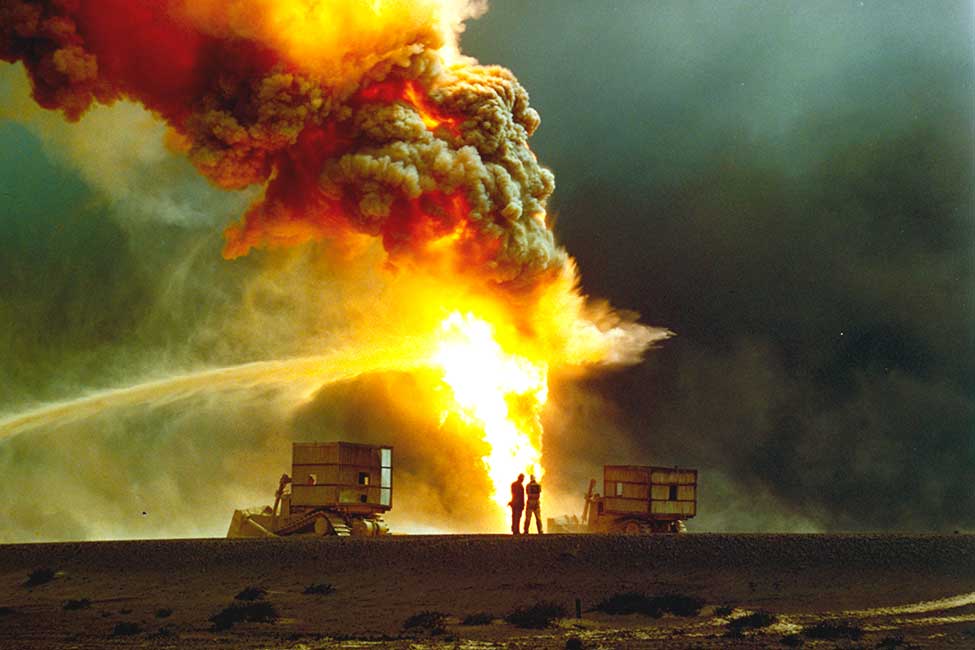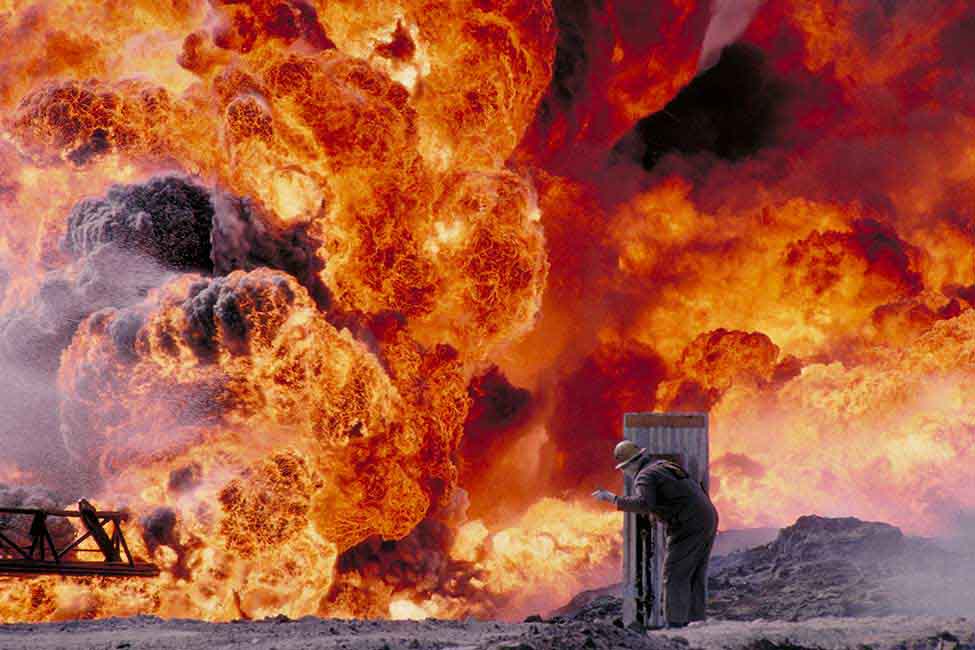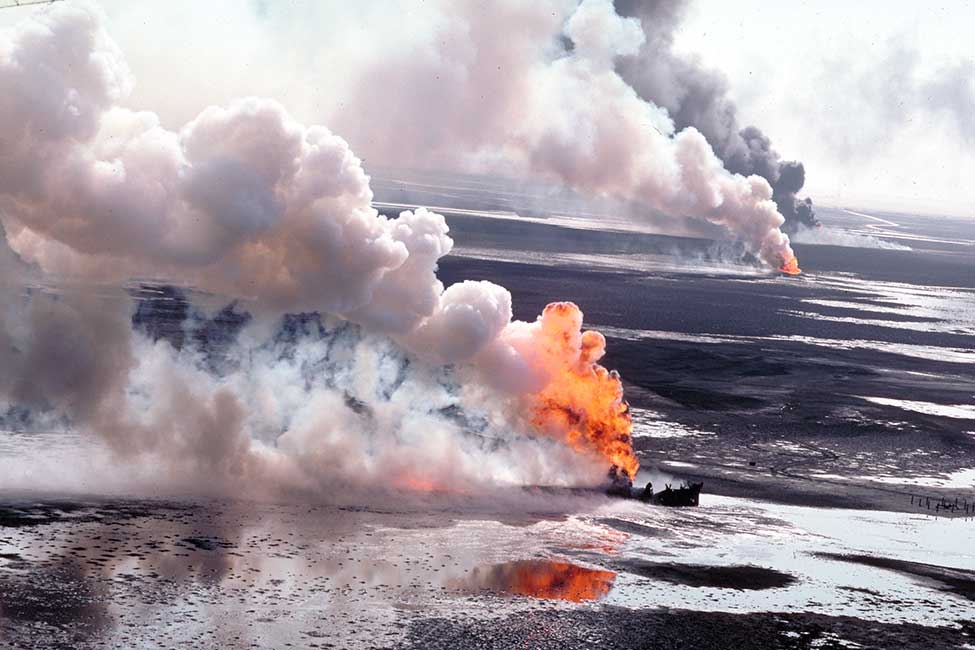As the first Gulf War drew to a close in February of 1991, retreating Iraqi forces systematically blew up oil wells, tanks, refineries, and other facilities in Kuwait. According to some estimates, the resulting fires burned four to six million barrels of crude oil per day. In addition, oil spilled into low-lying areas and trenches in the desert. Some were set on fire.
Poisonous smoke, soot, and ash filled the skies. It was an environmental catastrophe and economic disaster for Kuwait.
To make matters worse, land mines and unexploded munitions presented hazards to firefighting crews.
On behalf of the Kuwait Oil Company, Bechtel and an international team took on the raging fires, managed the environmental restoration, and reconstructed the country’s oil production facilities.
In just nine months, the team extinguished and capped 650 damaged or burning oil wells in Kuwait. In 12 months, oil production was restored to pre-war capacity.
Bechtel mobilized an international force of more than 16,000 workers to put out the wellhead fires, stop the gushing flow of oil, and help resurrect oil fields. Further, after Saddam Hussein’s army released more than 11 million barrels of oil into the gulf, Bechtel swiftly coordinated the effort to clean up the water and shoreline.
"Bechtel has proven time and again that they can really deliver when faced with a challenge."
Dr. Nizar Tawfiq, vice president of the Saudi Meteorology and Environmental Protection Administration
Crude oil spilling into the Gulf
Oil first gushed into the gulf in January 1991, following Iraqi sabotage at Kuwait’s Sea Island Terminal. The flow from that loading facility, as well as from oil tankers, formed a thick slick roughly 25 miles long by 10 miles wide (40 by 16 kilometers). “It’s black, smelly, and filled with death,” said the head of Bechtel’s project management team. Saudi shores bore the brunt of the slick, and Bechtel helped the Saudi Arabian government respond to the world’s largest oil spill.
A blanket of smoke and petroleum mist lay over most of Kuwait. At high noon, people often used flashlights to see the street curbs.
Early recovery
Experts had estimated it would take decades for a complete environmental recovery. But the Bechtel-led team beat expectations. For example, crews completed the clean-up of Karan Island, offshore Saudi Arabia near Jubail, just in time for endangered green and hawksbill sea turtles, which for generations had used Karan as a nesting ground starting in early May.
By mid-1991 the effects of the clean-up effort were already clearly visible as fish and dolphin returned to swim in the Gulf. The region continued to recover ahead of expectations.


